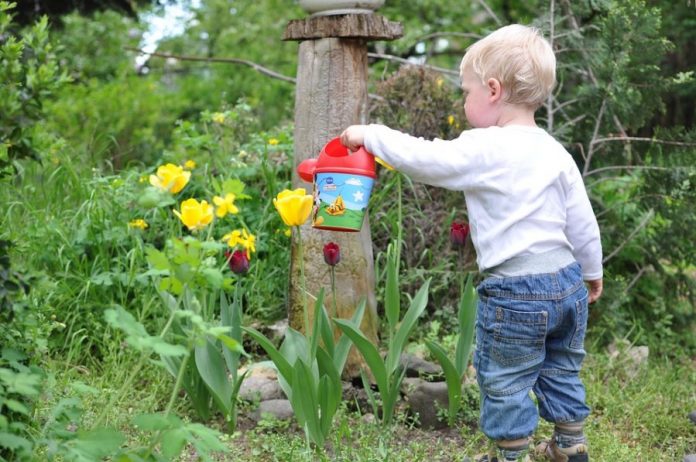 By Barbara Brown and Rhonda Love, Denton County Master Gardener Association
By Barbara Brown and Rhonda Love, Denton County Master Gardener Association
Many adults have fond memories of helping parents and grandparents in a vegetable garden. Digging in the dirt. Picking ripe vegetables for dinner. Watching insects search for bugs and bees for nectar. It was fun! Whether we knew it or not, we also learned where food comes from and how to work with nature to our mutual benefit. If you have young children or grandchildren, you can make a difference in their lives by sharing your love and knowledge of gardening.
Start young
Most pre-school aged children enjoy being outside and digging in the dirt. They will jump at the chance to dig a hole and plant a seed. If they come across an earthworm, all the better! Remember that young children have short attention spans, so don’t give them too much to do at one time. Teaching young children how to be gardeners does not require lessons plans and lectures. Rather, it is show and tell. Let the child do simple tasks. Show them how to hold the tools, how to dig the holes, plant the seeds or seedlings, cover and water them. Most children love praise, so be generous with it as they show you what they have learned.
If you are planting seeds, choose something that comes up in just a few days, such as radishes, green beans or lettuce. Seeing what they planted as little seeds emerge and look like real vegetables is rewarding. When planting seedlings, talk about why the hole needs to be deep enough to match the depth of the container, but not too deep. Show them how to gently press the soil around a plant to protect the roots and give it a good start.
Young children can also help with watering seedlings but expect there to be some mess involved. That is part of the entertainment. And, be sure to include them in harvesting. Children have been known to enjoy eating vegetables they helped pick even though they would not normally like to eat them.
School-age children in the garden
As children progress through elementary school, the time they can focus on a single task increases and they are learning to solve problems and accept responsibility. The gardening knowledge you share with children in middle childhood includes selecting the best plants for our growing area, timing planting to optimize the chance of success, and reinforcing good plant management. Gardening should still be fun though and include recognition of their accomplishments.
This is a good age to give a child his or her own garden space. Think about creating a dedicated area for a child’s garden. An area about 2 to 3 feet wide and 6 feet long allows a child to reach into the garden to water, weed and harvest without stepping into the soil or onto the plants. Have your child make a sign identifying this special area as (child’s name)’s garden.
Create a plan. Children 6 to 8 years old may want to grow vegetables they like to eat. Or, you can work together to create a special-purpose space such as a pizza or taco garden that provide ingredients for some of their favorite foods. Use the planning time to talk about the plant’s required growing conditions including the amount of sunlight required, nutrients and time to maturity. For younger children, they might enjoy drawing a picture of their new garden plan.
When feasible, take the child with you to purchase the seedlings or seed packets, all the while gently teaching. After the garden is planted, your focus as gardening guru shifts to sharing information about plant care. Some children respond best to a written list of tasks that can be checked off when accomplished, while other children do better with hands-on instruction. You can reinforce learned concepts by asking questions about how and why a task should be done. As the child gets older, they can take increased responsibility for their garden, but in the beginning plan on helping directly.
Toward the end of middle-childhood—ages 9 to 12—a youngster may become interested in the garden as a laboratory for school science projects. What a wonderful opportunity to share knowledge and encourage young minds! This is also an age when children develop a group of friends who they want to spend time with. So, you might take advantage of that to invite a few more children into gardening projects. After a gardening activity is done, you can sit in the shade and talk about what went on, who did what, who saw what.
You have made a difference
As children enter the teenage years, their priorities shift to spending time with their peer group often to the exclusion of gardening activities. They are becoming independent beings. This is normal. However, from you they acquired knowledge about and an appreciation of growing a garden that will emerge later in their lives to be shared with their children and grandchildren. Thank you!








.jpg)





